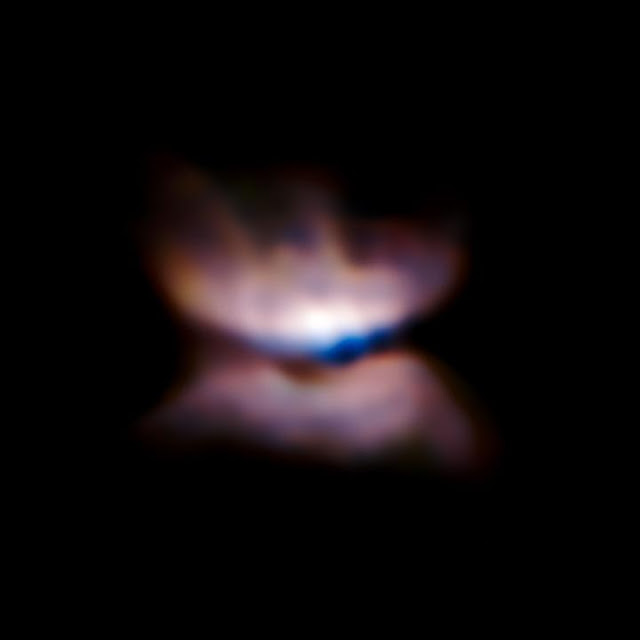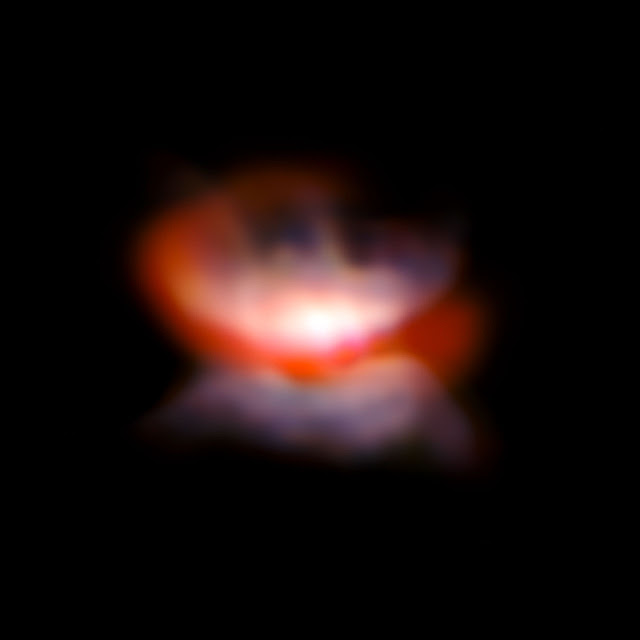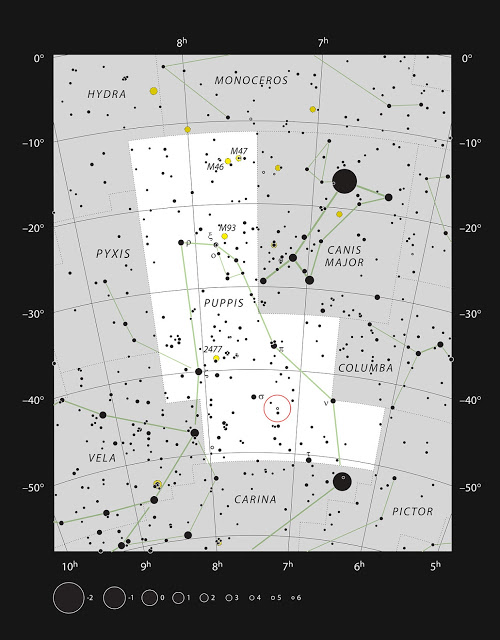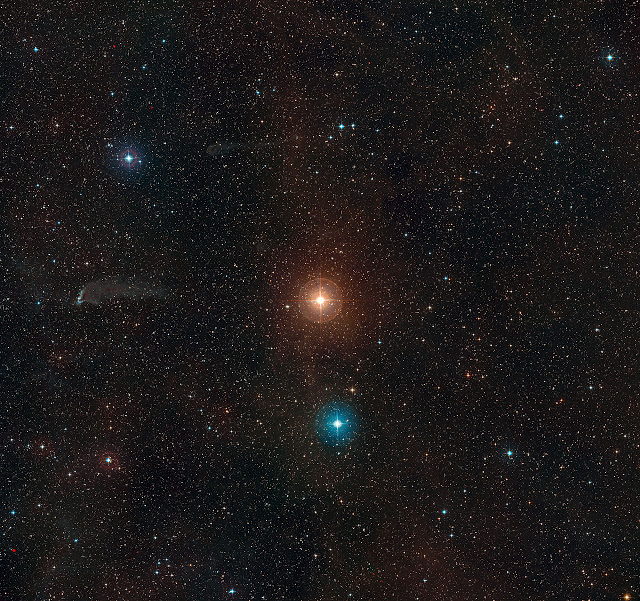| Online: | |
| Visits: | |
| Stories: |

| Story Views | |
| Now: | |
| Last Hour: | |
| Last 24 Hours: | |
| Total: | |
Dying Red Giant Star Births Cosmic Butterfly
Some of the sharpest images ever made with ESO’s Very Large Telescope have for the first time revealed what appears to be an ageing star in the early stages of forming a butterfly-like planetary nebula. These observations of the red giant star L2 Puppis from the ZIMPOL mode of the newly installed SPHERE instrument also reveal a close stellar companion. The dying stages of the lives of stars continue to pose many riddles for astronomers.

Credit: ESO/P. Kervella
ZIMPOL can produce images that are three times sharper than those from the NASA/ESA Hubble Space Telescope, and the new observations show the dust that surrounds L2 Puppis in exquisite detail [1]. They confirm earlier findings, made using NACO, of the dust being arranged in a disc, which from Earth is seen almost completely edge-on, but provide a much more detailed view. The polarisation information from ZIMPOL also allowed the team to construct a three dimensional model of the dust structures [2].

Credit: ESO/P. Kervella
The combination of a large amount of dust surrounding a slowly dying star, along with the presence of a companion star, mean that this is exactly the type of system expected to create a bipolar planetary nebula. These three elements seem to be necessary, but a considerable amount of good fortune is also still required if they are to lead to the subsequent emergence of a celestial butterfly from this dusty chrysalis.
This chart shows the large southern constellation of Puppis (The Poop, part of the mythological ship Argo). All the stars visible to the naked eye on a clear dark night are shown. The location of the star L2 Puppis is marked with a red circle. This red giant star is faintly visible without a telescope and appears very red through one.

Credit: ESO, IAU and Sky & Telescope
In addition to L2 Puppis’s flared disc, the team found two cones of material, which rise out perpendicularly to the disc. Importantly, within these cones, they found two long, slowly curving plumes of material. From the origin points of these plumes, the team deduces that one is likely to be the product of the interaction between the material from L2 Puppis and the companions star’s wind and radiation pressure, while the other is likely to have arisen from a collision between the stellar winds from the two stars, or be the result of an accretion disc around the companion star.
Although much is still to be understood, there are two leading theories of bipolar planetary nebulae, both relying on the existence of a binary star system [3]. The new observations suggest that both of these processes are in action around L2 Puppis, making it appear very probable that the pair of stars will, in time, give birth to a butterfly.

Credit: ESO/Digitized Sky Survey 2
Pierre Kervella concludes: “With the companion star orbiting L2 Puppis only every few years, we expect to see how the companion star shapes the red giant’s disc. It will be possible to follow the evolution of the dust features around the star in real time – an extremely rare and exciting prospect.”
Richard Hook
Source:



